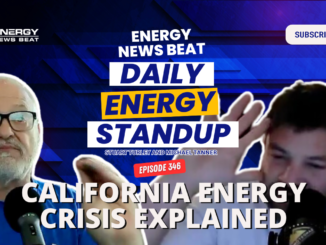
(Bloomberg) – Europe’s oil majors seem to finally be winning back investors by refocusing on their core business, yet the valuation gap with their dealmaking U.S. peers remains stubbornly wide. After companies such as bp Plc embraced net zero targets during the pandemic, Russia’s invasion of Ukraine has given them the opportunity to pivot back to fossil fuels.
Source: World Oil
The last few weeks have seen Shell Plc, TotalEnergies SE and Eni SpA sign big supply deals that will put Qatar’s liquefied natural gas (LNG) at the heart of Europe’s energy system for decades to come.
Yet those moves are dwarfed in their impact by Exxon Mobil Corp.’s takeover of Pioneer Natural Resources Co., making it the king of U.S. shale oil, and Chevron Corp.’s $53 billion deal to buy Hess Corp. The transatlantic divide will likely come into focus this week as TotalEnergies, Exxon and Chevron kick off earnings for the majors.
“For investors looking to bet on higher oil and gas prices for longer, Exxon and Chevron are better options,” said Allen Good, director of equity research at Morningstar. “We continue to think the ‘ESG discount’ for European firms is playing a role.”
Shares of Shell, Europe’s largest energy company, reached a record high earlier this month and is trading at about eight times earnings. They would need a further 50% gain to match Exxon and Chevron’s multiples, according to data compiled by Bloomberg.
The oil industry’s adjusted net income from July to September is predicted to rise, ending three quarters of sequential declines from the record-breaking earnings seen in 2022. The five majors’ combined profits are set to hit $33 billion in the period, down from $57 billion a year earlier but an increase of 25% from the second quarter, according to data compiled by Bloomberg.
Earnings remain near historically high levels as energy prices are boosted by geopolitical risks from Russia’s invasion of Ukraine to the threat of a broader conflict stemming from the Israel-Hamas war. Brent crude came close to $100 a barrel last month, while benchmark European gas prices reached an eight-month high in early October.
That’s delivered a windfall of tens of more than $56 billion dollars in dividends and share buybacks to the supermajors’ shareholders so far this year. Yet even in these lucrative times, investors are still drawing an unfavorable contrast between companies on either side of the Atlantic.
“The market has gone back to valuing traditional oil and gas higher than in the past, with renewed importance due to geopolitical events,” said Kevin MacCurdy, lead upstream analyst at Houston-based Pickering Energy Partners. “This favors traditional oil and gas producers, especially from secure countries like the United States.”
Exxon’s purchase of Pioneer, paid for with its own shares, will increase the Texas oil giant’s oil and gas production by 20% at a time when bp and Shell are fighting to keep theirs from declining. The gap may widen further since Exxon executives have signaled higher medium-term growth rates for their enlarged Permian division than the market was expecting, according to Jason Gabelman, a New York-based analyst at Cowen & Co.
After buying Hess, Chevron will gain a 30% stake in 11 billion barrels-equivalent of recoverable resources in Guyana, one of the world’s newest oil producers where Exxon also has a major presence. The company expects the acquisition to boost its production growth for years to come and allow more generous returns to investors.
Deals like these put pressure on the European majors to beef up their oil and gas production, but any all-share acquisitions like those of Hess and Pioneer would be more difficult due to the valuation gap.
“All the North Americans are getting bigger,” said Peter McNally of Third Bridge Group. “There’s a resource here in America that doesn’t exist in Europe.”
Wooing investors. Not long after Shell shares hit a record high, Chief Executive Officer Wael Sawan said his new strategy was pleasing investors.
“People like the direction we are taking, they like the balance,” Sawan said at the Energy Intelligence Forum in London last week. Shareholders “rightly are insisting that it is a strategy that is focused, that is measured and that has a performance track record that earns us the right to attract more capital.”
Since taking the helm in January, Sawan has maintained the company’s 2050 net zero target but has laid out a different path to get there. The company will put a greater share of investment into fossil fuels than previously planned. After saying its production would drop by 1% to 2% annually, Shell now plans to maintain oil output at current levels and boost gas.
bp has also scaled back its plans to cut production this decade. Last month, TotalEnergies said its output would grow by 2% to 3% a year to 2028, with the biggest increases coming from LNG.
The pivot back to oil and gas may be what investors want to see when prices are high, but after several strategy shifts in as many years, it may not be enough to close the gap with Exxon and Chevron.
“Investors pay premium valuation for consistent strategies,” said MacCurdy. “There’s less risk to outer-year cash flows when there’s more confidence that investment strategies are not going to change.”



